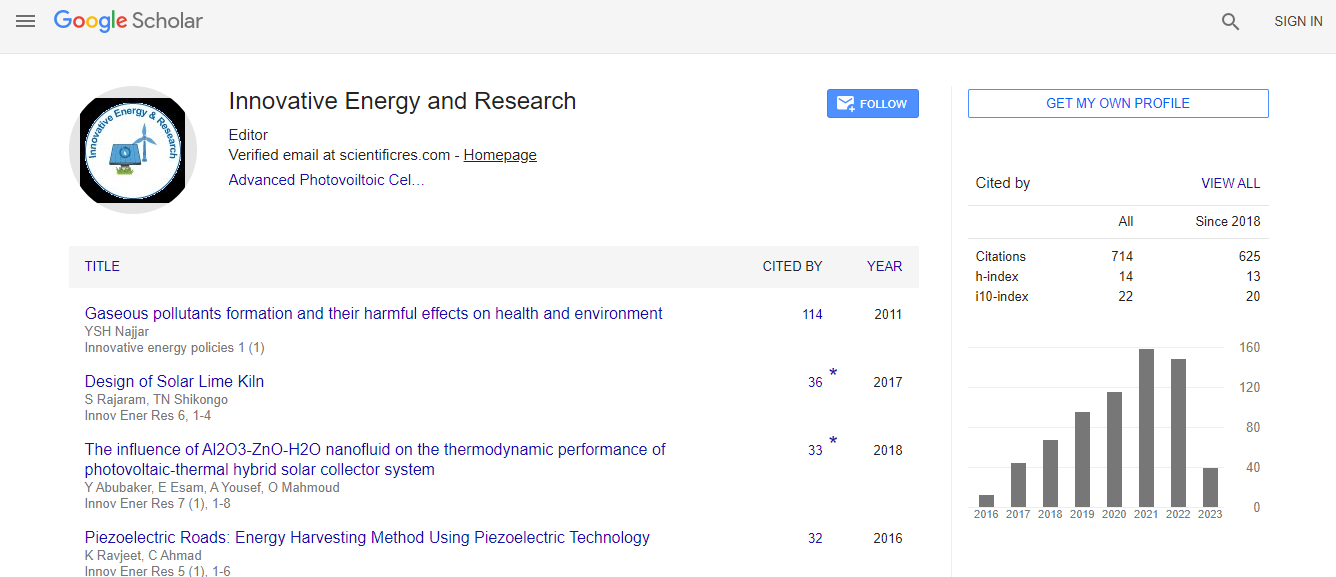Our Group organises 3000+ Global Conferenceseries Events every year across USA, Europe & Asia with support from 1000 more scientific Societies and Publishes 700+ Open Access Journals which contains over 50000 eminent personalities, reputed scientists as editorial board members.
Open Access Journals gaining more Readers and Citations
700 Journals and 15,000,000 Readers Each Journal is getting 25,000+ Readers
Google Scholar citation report
Citations : 712
Innovative Energy & Research received 712 citations as per Google Scholar report
Innovative Energy & Research peer review process verified at publons
Indexed In
- Google Scholar
- Open J Gate
- Genamics JournalSeek
- RefSeek
- Hamdard University
- EBSCO A-Z
- Publons
- Euro Pub
- ICMJE
Useful Links
Recommended Journals
Related Subjects
Share This Page
The effect of different catalyst layer porosity on proton-exchange membrane fuel cells
Joint Event on 2nd International Conference on Renewable Energy and Resources & Energy Materials and Fuel Cell Research
Anil Can Turkmen, Cenk Celik, Halil Ibrahim Sarac and Bulent Mutlu Dogru
Kocaeli University, TurkeyDGR Project Ltd, Turkey
ScientificTracks Abstracts: Innov Ener Res
Abstract
Nowadays, due to the development of relevant technology for renewable energy sources and the effects of global warming, it has increased considerably. Especially with the introduction of electric vehicles on the market, energy storage solutions are at the forefront. The use of batteries in this regard is quite popular, but it has not been able to solve various problems of battery technology (length of charging time, a risk of explosion, etc.). In this sense, the studies on the fuel cell technologies, which are supposed to produce and use the energy in place, have gained speed. The fuel cells are still in development. Proton Exchange Membrane Fuel Cells (PEMFC), which are especially low temperature fuel cells, are highly promising. In the study, the effect of the porosity of anode-side catalyst layers on the performance of proton exchange membrane fuel cells was modeled. In the prepared model, all geometric parameters and material properties except the catalyst layer porosity are kept constant. The catalyst porosity was maintained between 0.1 and 0.5 and a parametric study was carried out with variations of 0.1. Obtained from the current-voltage graphs, the catalyst layer ensures maximum performance over a certain range of porosity. The highest performance was observed in the fuel cell using a catalyst with a porosity value of 0.2. The low performance of the fuel cell using catalysts with porosity values of 0.5 and 0.1 revealed that this value should be limited. The results of the work done were compared with the models in the literature and the model was verified.Biography
Anil Can Turkmen has completed his B.Sc. and M.Sc. at the age of 27 years from Kocaeli University and he worked in Lund University/Sweden, for 1 year. He has published more than 15 papers. He was working on modeling and experimental study about Proton Exchange Membrane Fuel Cells and Direct Borohydride Fuel Cells.
E-mail: anilcan.turkmen@hotmail.com

 Spanish
Spanish  Chinese
Chinese  Russian
Russian  German
German  French
French  Japanese
Japanese  Portuguese
Portuguese  Hindi
Hindi 
